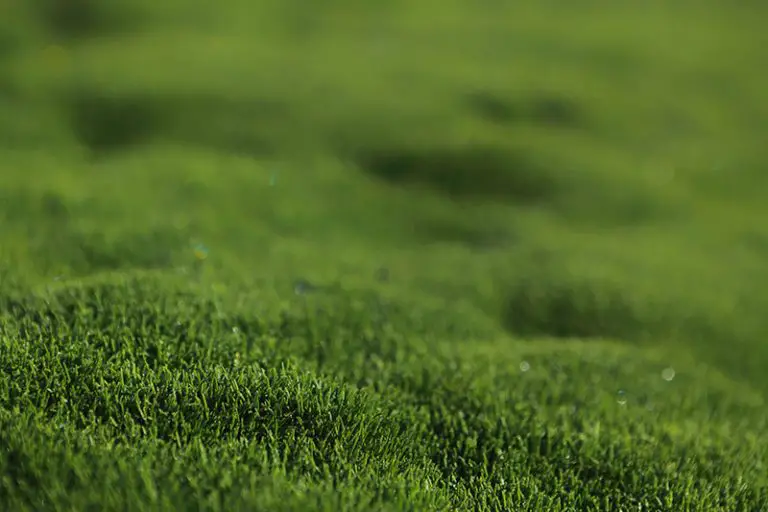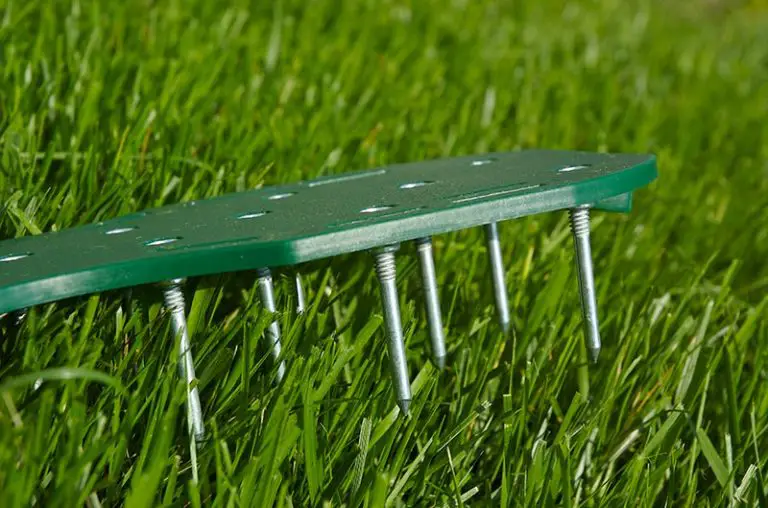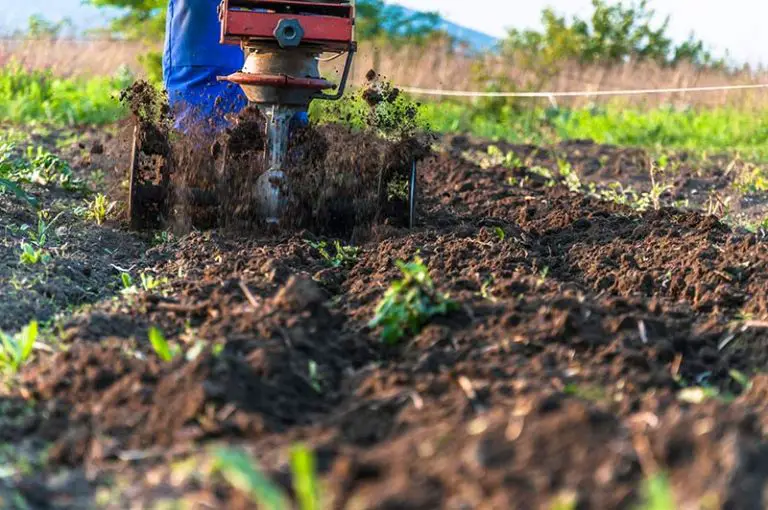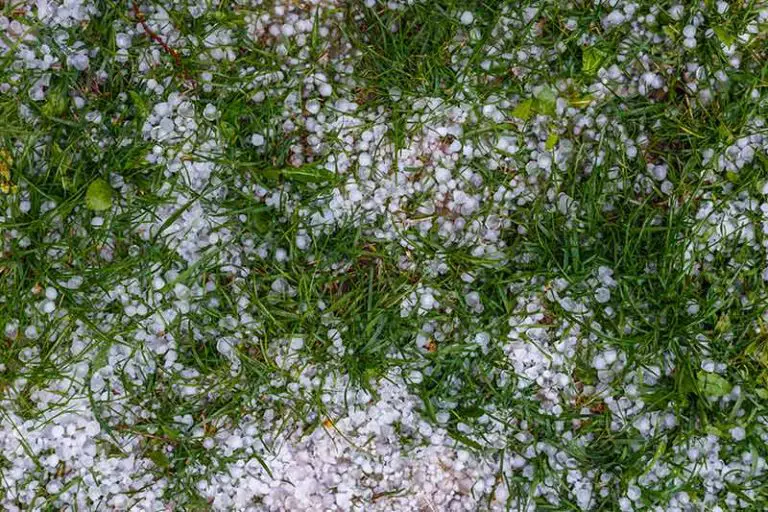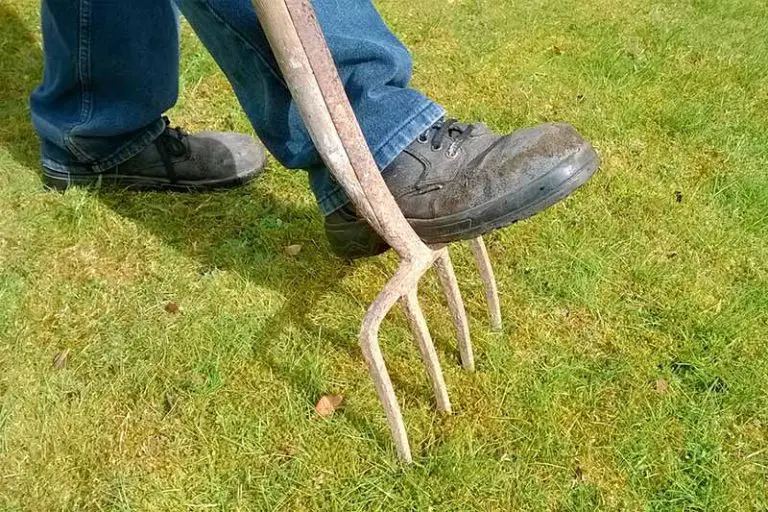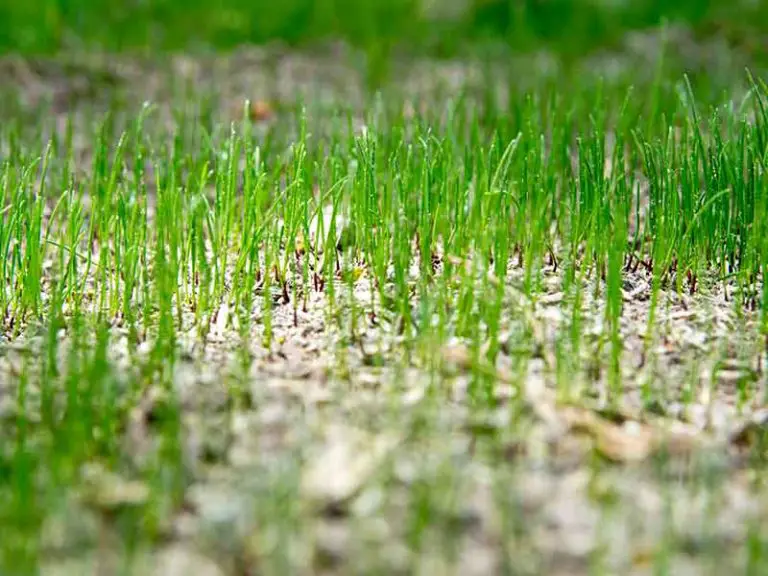What to Do With Grass Clippings
It’s mowing season, and you’re having to mow your lawn on a weekly basis. You may be asking yourself: what should I do with all of these grass clippings? Well, before you go throwing your grass clippings straight into the garbage, there are several different ways you can repurpose those clippings for the benefit of both your lawn and the wider environment.
The easiest way to recycle your clippings is to simply leave them on the lawn, where they will decompose and act as an all-natural fertilizer for your growing grass. If you’d rather bag your clippings, you can add them into your compost pile, use them as organic mulch, use them to create an organic liquid fertilizer, or feed them to the animals around your home.
Read through this guide to find out the full extent of the many different ways you can repurpose your grass clippings.
What to Do With Grass Clippings
1. Leave Grass Clippings on Lawn
The option that requires the least amount of effort while having the most benefits is to simply leave the grass clippings behind on the lawn. Any grass clippings that are an inch or less can be left in place where they fall on the lawn during mowing, where they will work their way down to the surface of the soil to quickly decompose. The decomposing clippings act as an organic mulch as they release a boost of nutrients to the surrounding grass plants, improve soil aeration and water retention, and encourage the plants to grow deeper and healthier roots. Leaving clippings on the lawn also helps to moderate the temperature of the soil and creates an ideal habitat for lawn-friendly organisms like insects, earthworms, and microbes.
This method is particularly beneficial for lawns that are sandy, clay-heavy, or deficient in organic matter. Keeping up with a regular mowing schedule is necessary for this method to be most beneficial.
Benefits of Leaving Clippings on Lawn
Provides Shade to Soil Surface
Leaving grass clippings on the lawn creates a layer that blocks the sun from hitting the soil surface, providing enhanced shade. This helps the soil to retain moisture for longer which would otherwise be lost through evaporation. Also, the shaded soil is less prone to weed growth as the weed seeds are unable to germinate without having access to light from the sun.
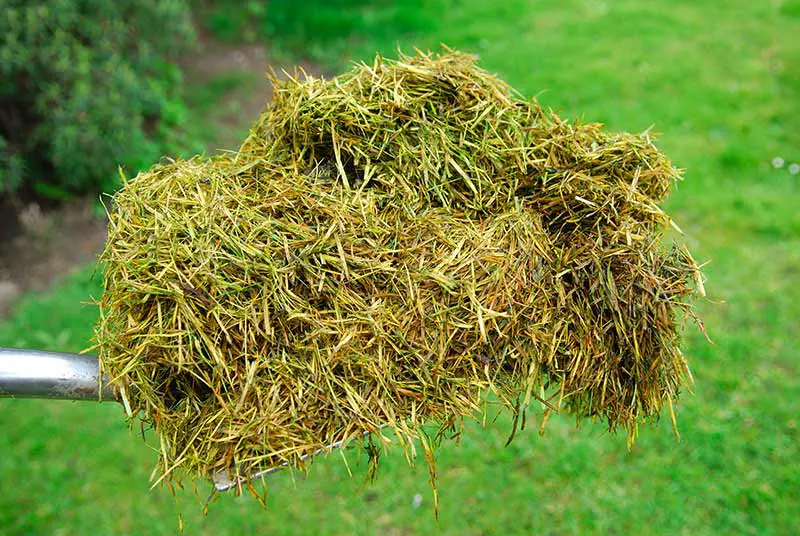
Acts As Organic Fertilizer
Grass clippings are just organic plant matter made up of the grass’ leaves and stems. As the clippings are in small chopped-up pieces, they will break down relatively quickly and act as a free organic fertilizer for your lawn all throughout the mowing season. As the clippings decompose, they provide the soil with a gradual and constant supply of nitrogen (N), phosphorus (P), and potassium (K). These are the primary nutrients needed by all plants – including grass – to grow and stay green, healthy, and resilient to disease. The clippings won’t burn your lawn unlike other harsher methods of fertilization, and you don’t need to dilute them or concern yourself with when to apply them.
Creates Less Work After Mowing
Leaving grass clippings on the lawn creates less work for you since the method requires no extra effort or clean-up to carry out. It eliminates the need to empty the grass bag on your mower and haul the bagged clippings to your compost pile or wherever you choose to dump them. This cuts down on the amount of time and effort you spend on your mowing sessions as all you have to do is let the clippings fall onto the lawn and leave them there.
Do Grass Clippings Cause Thatch?
No, grass clippings neither cause nor contribute to thatch.
Thatch is a layer of tangled organic matter that sits between the actively growing grass and the soil’s surface in your lawn. It naturally builds up over time, and when it becomes too thick, it obstructs the flow of air and nutrients to the active grass plants. This causes areas of the lawn to turn yellow and die off, at which point dethatching and aeration of the lawn become necessary. Refer to our article How to Dethatch a Lawn for a full list of causes of thatch build-up, along with a step-by-step guide on how to get rid of a thick thatch layer.
While some remove grass clippings in the belief that they contribute to thatch, this is incorrect. Even though thatch is mainly made up of dead roots, stems, and leaves, it only accumulates when the decomposing matter builds up faster than it breaks down. As grass clippings are finely chopped and dropped in low volume, they break down relatively quickly and therefore don’t contribute to the growth of the thatch layer.
Method: Leaving Clippings on Lawn
Before carrying out this method, you may need to check with your local ordinances or HOA requirements to see if you’re allowed to leave the clippings on the lawn.
1. Set the Deck on Mower
Set the deck on your mower so that you’ll mow ⅓ of the current height of the grass. Make sure that the blade of the mower is sharp and sharpen it if necessary – this ensures a clean cut and a mower even distribution of clippings.
2. Mow the Lawn
If using a mulching mower or a lawn mower with a side discharge chute, mow the lawn in your usual pattern and let the grass clippings fall onto the lawn. Use a rake to spread apart any heavy piles of clippings, and go over any areas where the grass is particularly long in order to shred the clippings smaller. If you bag the clippings, spread them evenly around your lawn after mowing.
When to Remove Grass Clippings
Despite what we’ve discussed in this section, there are some cases where you should avoid leaving or placing grass clippings on your lawn.
If the Lawn Has a Lawn Disease
If your lawn has a disease or fungal infestation of any kind, such as Brown Patch Lawn Disease, do not let the grass clippings fall on your lawn after mowing. Doing so will only encourage the disease or fungus to thrive, and may spread it around allowing it to infect larger areas of your lawn. By removing the clippings you help to decrease the population level of the harmful organisms.
If the Lawn is Wet
It’s highly unadvised to mow a wet lawn, but there can be times where it becomes absolutely necessary. In these cases, you should never leave the wet clippings on the lawn. Wet grass clippings left on a damp, freshly mowed lawn create the perfect environment for fungal infestations to infiltrate and spread throughout the healthy growing grass. Also, the wet clippings may mat together and can end up smothering the surrounding grass plants.
If the Grass is Particularly Tall
If the grass is particularly tall or the grass clippings are longer than one inch, it’s probably best to avoid letting the clippings sit on the lawn. Piles of longer clippings will take more time to decompose and may end up smothering the surrounding actively growing grass. In this case, you should either mow over the rows of grass repeatedly in an attempt to break down the clippings, remove them after mowing, or use a bagging attachment to catch the clippings as you mow.
If any of these conditions apply to you, or you’d just prefer not to leave the clippings in place, read through the following sections to learn the other ways grass clippings can be used in your lawn and garden.
2. Add Grass Clippings to Compost
An alternative to leaving the clippings on the lawn is to bag them and then add them to your compost pile or bin. They will break down very quickly in the pile and will enrich your compost with a boost of nitrogen, along with a number of other essential nutrients. They also help to heat up the overall temperature of the pile, which speeds up the decomposition of the other materials in the compost.
You can either add your clippings to an open compost pile or to an enclosed compost bin. If you’re new to composting or want to know more about the process, read through our guide on How to Compost where we have gone through the benefits along with a how-to guide on composting at home.
Method: Composting Grass Clippings
1. Add Clippings with Brown Materials
Add the grass clippings to your compost pile or bin along with your choice of brown materials. When building a compost pile, you should aim to have a balance of about ⅓ green materials to ⅔ brown materials in order for the matter to break down properly. Along with the clippings, add shredded paper, cardboard, straw, dry leaves, or alternative fibrous compostable material. As a note, if the grass has dried out and turned brown before being added to the pile, it’s then considered a brown material.
2. Mix Clippings into Pile by Turning
Mix the grass clippings into the rest of the composting materials. As grass is a green material, it tends to mat together after it has been cut and added to the compost pile. This causes the grass clippings to become compacted and overly wet in the pile, preventing proper aeration of the materials, which in turn causes the death of the microbes responsible for the composting process. As a result, you may end up with an odorous compost pile that takes longer to decompose. For this reason, you should make sure that you mix in the clippings thoroughly by turning the pile several times when adding them in. this ensures that the green matter is distributed evenly with the brown matter and prevents mats from forming.
3. Use Grass Clippings as Mulch in Garden
Another way you can repurpose your grass clippings is to use them as an all-natural mulch for the rest of the plants in your garden.
Mulching is the process of covering the soil around vegetables and plants to encourage their growth. It acts as a protective barrier to shade the soil’s surface from the sun, helping the soil to retain moisture, regulating its temperature, and suppressing the growth of weeds.
Organic mulches, such as those made from grass clippings, will additionally provide the soil with a boost of nutrients and encourage the presence of beneficial organisms and worms due to the mulch’s decomposition process. This method offers a free alternative to store-bought mulch, and by creating it at home from grass clippings you eliminate the need to lug a heavy bag of premade mulch around, easing the overall application process.
Method: Using Grass Clippings as Mulch
Place an even layer of fresh grass clippings around the plants, vegetables, or shrubs in your garden. Make sure that the layer is no more than 1 to 2 inches in thickness, otherwise the clippings will start to emit a foul odor as they decompose. Top up the mulch as necessary throughout the rest of the season. As a note, you may notice that the height of the mulch will start to drop as the mulch decomposes or is consumed by earthworms – this can be aesthetically displeasing but it’s a natural, inevitable side effect of the process. Check with your local ordinances in case there are specific requirements over this.
4. Make Clippings into Liquid Fertilizer
You can use your grass clippings to create a grass clipping tea which can then be spread around your lawn as an organic liquid fertilizer. The high-nitrogen clippings create a nitrogen-rich liquid, providing a boost of this nutrient to any grass or plants growing in the fertilized soil.
Method: Making Grass Clipping Tea
1. Steep Grass Clippings in Bucket of Water
Take a 5-gallon bucket and fill it ⅓ full with fresh grass clippings, then fill the rest of the bucket up with water. Ideally, you should keep this indoors to protect it from mosquitoes – however, it will start to smell terrible after a while of steeping, so the alternative is to keep it outside covered with cheesecloth or a similar screen. The mixture should be ready to use after about 2 weeks.
2. Dilute and Spread Tea
After 2 weeks, take a pint of the mixture and add it to your watering can before filling it with water. Water the lawn and/or plants with your mixture and repeat this method of fertilization every 2 to 4 weeks.
5. Layer Grass Clippings in Raised Garden Beds
If you’re in the process of building up a raised or ‘hugelkultur’ bed in your garden, lawn clippings can be used to provide it with nutrients
Hugelkultur beds are raised garden beds that are built from the ground up using the same materials you would place on a compost heap. This includes sticks, branches, logs, woodchips, manure, leaves, food scraps, and grass clippings. The mound is topped off with a layer of topsoil and/or another layer of compost, at which point it’s ready to be planted with grass or other plants.
Adding a thick layer of grass clippings into your raised hugelkultur bed provides the mound with a boost of nutrients at the same time as helping to build up the bed, reducing the amount of compost that would be needed to make up the same volume. The grass clippings also help to break down the brown, carbon-rich, fibrous material that makes up the rest of the hugelkultur bed.
6. Use Grass Clippings as Food for Animals
Your grass clippings can be used to feed a number of different animals in and around your home including livestock, deer, and indoor pets.
Livestock
If you have any pets or livestock around your home that like to feed on grass, bag your clippings then share them with the animals later. Cows, sheep, goats, geese, and chickens will all be happy to be fed the fresh green grass from your lawn.
Deer
If you live in an area near woodlands populated by deer, you could use the clippings as a distraction to stop the deer from feeding on your lawn. It’s not a guarantee, but spreading the grass clippings at the edge of the woods may appease the deer enough so that they leave your precious grass and plants be.
Rabbits and Guinea Pigs
You can even use grass clippings to feed pet rabbits and guinea pigs by turning the clippings into straw. Spread the clippings out on a window screen in a thin layer to aid rapid drying. Keep turning the clippings over daily until it has completely dried, at which point you can give it to your rabbits as a homemade snack.
It’s important to note that you should use the clippings immediately after mowing if feeding them to any animals, otherwise they may ferment and become toxic. Never feed animals with grass clippings that come from a lawn treated with pesticides or herbicides – these are obviously also highly toxic and not suitable for consumption.
7. Use Grass Clippings in Vermicomposting Bin
Vermicomposting is a method of creating compost using particular worms known as red wigglers. These worms break down organic materials by eating and digesting them, then expelling them through castings. It is usually carried out in a specialized worm composting bin.
Grass clippings can be added to vermicomposting bins to feed the worms with a high-nitrogen snack, which in turn results in a more nitrogen-rich compost. Alternatively, it can be used as bedding for the worm bin after it has been dried out to a straw-like consistency.
Method: Using Clippings for Worm Bedding
Spread the grass clippings on a window screen in a thin layer to speed up the drying process. Keep turning the clippings until they are completely dry and have turned brown in color. Mix the clippings with equal parts dry leaves and then place them in your vermicomposting bin.
Method: Using Clippings for Worm Food
Place a handful or two of fresh grass clippings at the top of your vermicomposting bin. Make sure to not place too much grass otherwise it will take longer to decompose and will start producing a foul odor.

